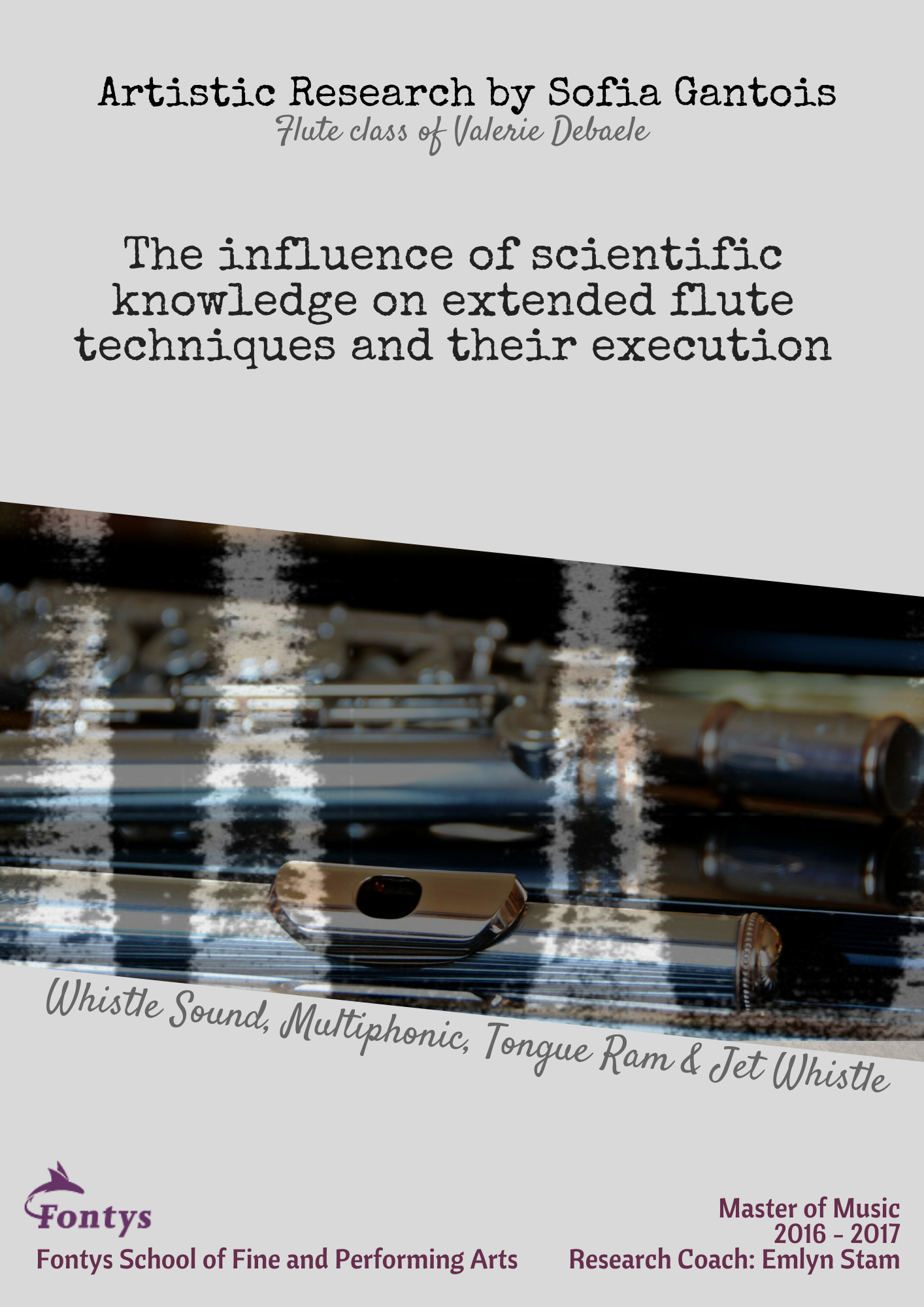RESEARCH
the influence of scientific knowledge on extended flute techniques and their execution (2017)
The topic of this research paper are four contemporary flute techniques; whistle sounds, multiphonics, tongue ram and jet whistle. I wanted to understand these techniques from a scientific point of view and see if this knowledge can then help me improve their execution. There have been few studies done on the acoustical characteristics of these techniques and they have intrigued me for a long time. I am convinced that it is important to understand how something functions in order to be able to correct or improve it and I think this knowledge can help a lot of flutists understand their instrument better and make them more aware of the physical processes involved in executing these techniques.
First, I had to gather information about the scientific and acoustical functioning of the techniques, but this turned out to be difficult. There are few sources that deal with these from an acoustical or scientific point of view. We can only find sources about how to execute the techniques and not how they originate and function. There are more sources about multiphonics because other instruments use this technique too.
I decided to investigate this problem from my own background in acoustics and physics. I studied the basis of flute acoustics and from there on formed theories for the techniques I wanted to investigate.
To help me with my theories I went looking for an expert in the field of acoustics. I contacted several acousticians and flute builders and eventually came into contact with Michèle Castellengo who was able to assist me in my work.
After this theoretical study I had to figure out what solutions or tips I could derive from this work for improving execution of these techniques on the flute. I tested the ideas I had and also worked through a number of sources devoted to the execution of contemporary techniques. With the knowledge I had gained from acoustics I was quickly able to predict which performance solutions would work and which would not. In this way I gathered insight into each of the techniques studied. As a result, I now understand why they function and how they can be performed easily.
It was a very intriguing journey and one that remains as of yet unfinished. In my search, I discovered a number of further issues that still have to be studied; similarities of mouth cavity for whistling and flute playing, new sorts of whistle sounds based on the functioning of the jet whistle and also throat tuning needs further investigating.
